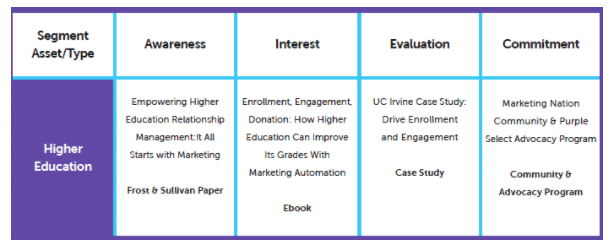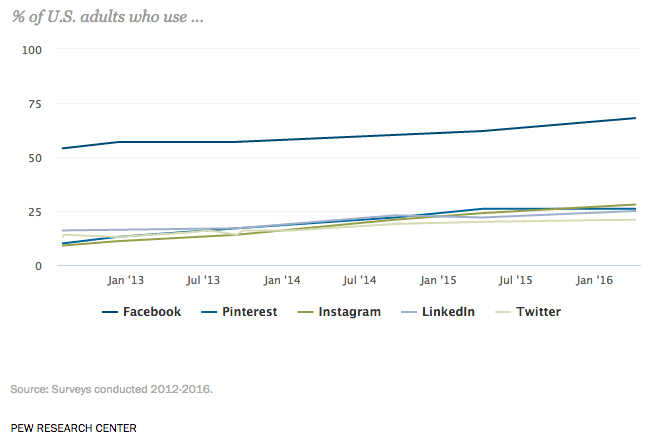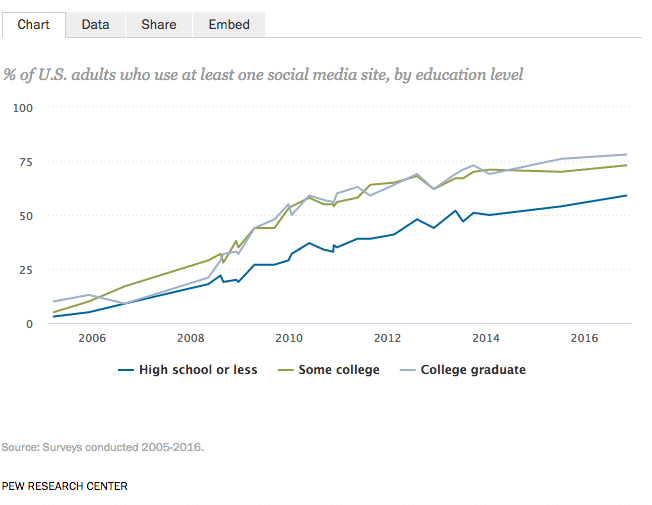Marketing is hard. Audiences are finicky. Bosses are panicky. And our sales folks are all hungry (for leads). And increasingly, account-based marketing has brought sanity to our marketing department and success back to our lead gen universe.
Account-based marketing, and its success is rooted in an alignment between marketing and sales. And while the number of companies deploying account-based marketing programs has increased by a steep 21 percent, only 60 percent of companies say theyre somewhat aligned with sales.
Why should you care about account-based marketing?
In traditional b2b marketing, we use segmentation and personas, and then we target to find the right prospects that might be interested in our stows. Its like putting out a specific variety of bird seed in your backyard because cardinals like that type of seed, and if youre going to watch birds, they might as well be cardinals.
Here, your content marketing and targeting strategies are the seed and your prospects are the cardinals.
But in account-based marketing, youre not trying to attract any cardinals in the vicinity that are fired up about your free buffet of seeds. Instead you focus on specific birds (some cardinals, others robins and still more are blue jays) that all hang out in the same stand of trees.
In other words, account-based marketing targets companies, not personas.
As technology expands and high-stakes deals happen more regularly, and in more departments, more people are involved in the decision-making process. In fact, 34 percent of b2b buyers have increased the number of stakeholders involved in the purchase process. For any given sale, anywhere between seven and twenty people are involved in the decision. And, the more people involved, the less likely a purchase will be made.
Thats where account-based marketing comes into play. Certainly, account-based marketing is powerful because it can market to specific companies instead of wasting time (and money) on unqualified or unideal prospects. (Seriously, how often do people request an ebook or register for a webinar, even though there is absolutely no way theyll ever buy? All. The. Time.) Account-based marketing lets you nix some of that inefficiency.
Your four-step guide to account-based marketing:
Step 1: Know your whales
This minute you can probably rattle off a list of your top performing accounts, and then another full of your dream accounts youve set your sights on. Thats great! Hold tight to that list! But take a look at your data and make sure youve honed in on the right prospects. Dig deeper into your customer data to figure out exactly which attributes should be used to determine your target accounts.
This process should be a collaboration between sales and marketing, as it calls for data from both departments. Take a look at the firmographic data which includes things like industry, company size, location and annual revenue.
Also dig into the digital behavior and strategic factors like market influence, likelihood of repeated purchase and expected profit margin.
Step 2: Research, research, research and research a little more
Once youve figured out your targeted accounts, then its time to research and strategize. Your goal is to treat these companies like big, organization-level personas. You should already have your personas for an ideal buyer, so remember thats not what youre doing here. Think bigger; broader. But use your buyer personas to build your company profiles.
Become familiar with all the elements of the company structure and who the key players are. Knowing the details can dictate how you market your wares especially if youve already identified your signers and your champions. Sometimes this information is already available in-house. Maybe someone on your team previously researched this target but didnt complete the account-based marketing process.
If the information isnt readily available, however, prepare to dust off your old Nancy Drew skills with a little detective work. Unfortunately, much of this process is manual. So block off a significant chunk of time to dedicate to researching your whale. LinkedIn is an easy way to unearth gen on your target, but there are other technologies that can help prospect, too.
Step 3: Create kickass content targeted to your whale
By now you know your top accounts (backed up by data) and youre familiar with the names of the key players inside each account. Next, its time to think about the content you need to create to attract your targeted accounts, the content you already have, and the gaps that exist so you can build a holistic content strategy. This content should serve up very specific solutions to the companys unique pain points. Try using a content matrix to map what message youll use to reach your targeted accounts through the buying journey. Heres an example from Marketo, published in the ebook, A Recipe for Lean ABM:
Now its time to create some personalized content. Before you get overwhelmed, realize that some of the content youll need for each stage of the journey doesnt need to be created from scratch. Repurpose your existing content helps create personalization at scale. Circle back to your content library, and then figure out what can be tweaked to resonate with your whales. Then begin crafting inimitable content thats tailored to your key accounts and the key players in them.
Step 4: Choose your channels
You can have the best content in the galaxy, but it wont do you a lick of good if no one sees it. Its important to find the right channels to distribute your content based on whats most effective for them and where they are in the sales journey.
Figure out where your prospects and the key players live online. According to the Pew Research Centers 2017 Social Media Fact Sheet, seven-in-ten Americans use social media. Facebook is still the most popular channel, but other channels, like LinkedIn and Twitter are relevant for your marketing.
The Fact Sheet also gives a rundown of the user profiles, laying out statistics based on age, race, gender, income, community type and education.
Beyond social, owned media, like email signature marketing, can inject your content into your email signature, dynamically update to provide the recipient with tailored content and delivers a more personal experience in the most intimate channel.
Dont forget to measure your results based on content type and distribution method. Test, optimize and repeat for best results.



